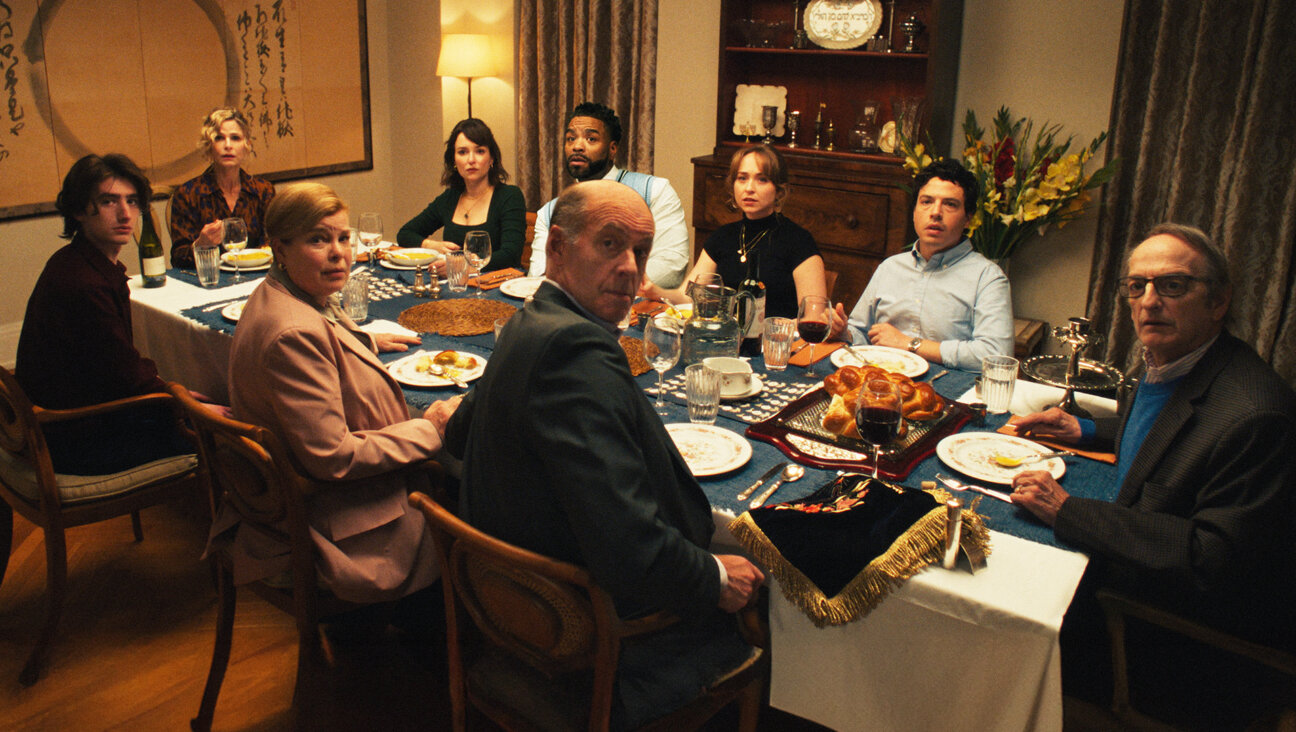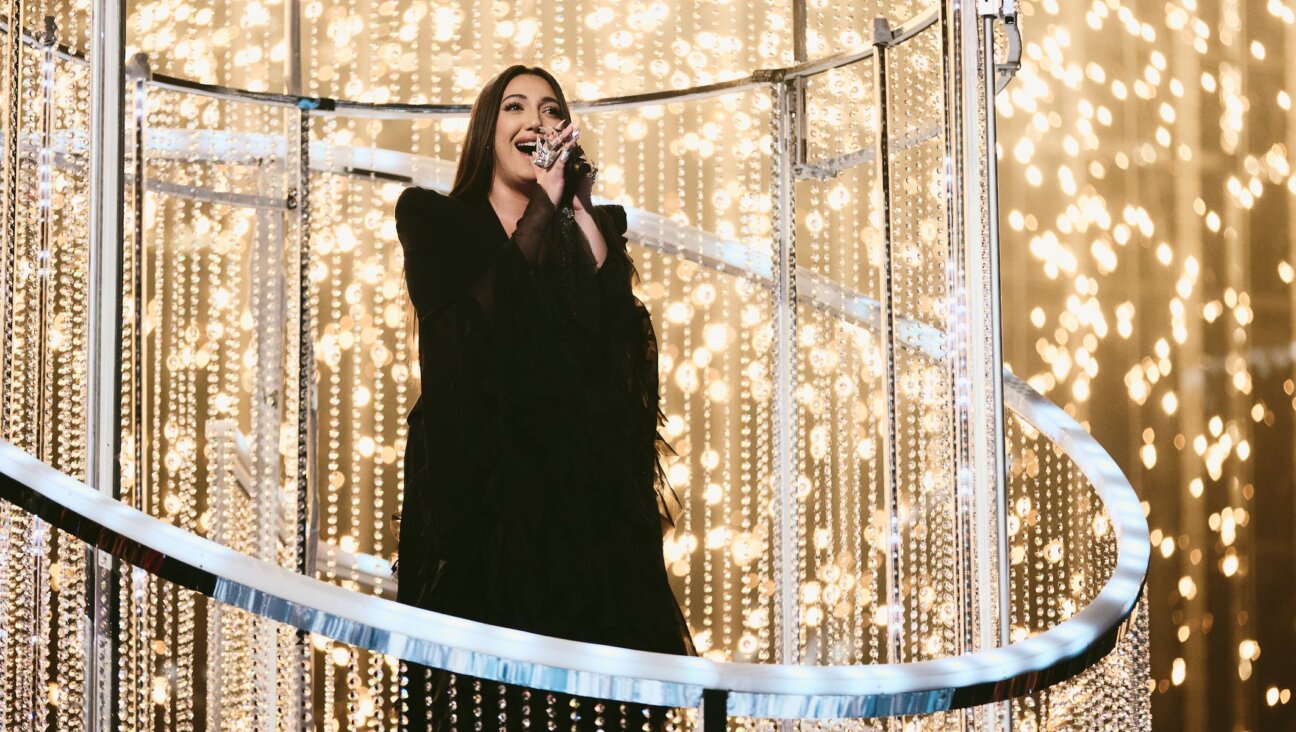Why 2015 Was the Most Yiddish Year of All

Graphic by Angelie Zaslavsky
For a supposedly dead or dying language, Yiddish is not going down without a fight. In fact, we’re in the midst of a rich and creative revival such that the language and its culture hasn’t seen in decades. Yiddish Studies programs are cropping up at the unlikeliest of colleges and universities across the United States. The Yiddish Book Center in Amherst, Massachusetts, which has rescued more than a million Yiddish books, is now focusing on digitizing them to make them available to anyone with an Internet connection; translating them for non-Yiddish readers; and educating a whole new generation of Yiddish speakers and scholars through its educational and fellowship programs.
Looking back over the past year alone, Yiddish made an impressive comeback. Some of the advances were academic and scholarly, others were innovative cultural efforts, and there were even some unexpected achievements in mainstream pop culture. Here’s a quick rundown of the Top 10 Yiddish moments of 2015:
1) This past year saw the launch of “In geveb,” an online journal of Yiddish studies (ingeveb.org). With contents mostly in English, the journal features news and reviews of current Yiddish events, plus translations, and takes a multidisciplinary approach, including work by language scholars as well as submissions by those working in closely related fields including historians, sociologists, art historians and literary scholars. David Roskies of the Jewish Theological Seminary is senior adviser to the publication, whose title means “in web” and was inspired by a collection of poetry by Yehoyesh.
2) In one of the most unlikely turns of events, black nationalist hip-hop group Public Enemy, which has been stained throughout its career by accusations of anti-Semitism thanks to Professor Griff, its so-called Minister of Information, released the album “Man Plans God Laughs,” recognizable to all in the know as a rendering of the popular Yiddish proverb Der mentsh trakht un got lakht.
3) It’s hard to believe that until this year, New York City, with its high concentration of creative musicians, artists, filmmakers, scholars, theater folk and Yiddish-speaking audiences, lacked the sort of annual or biannual Yiddish cultural festival that are present in other major international cities such as Toronto and Krakow. This past June, the National Yiddish Theatre Folksbiene at the Museum of Jewish Heritage, in collaboration with UJA-Federation of New York, presented the first KulturfestNYC, a week-long festival of concerts, plays, films, talks, tours, symposia, etc., spread out around the city — even at Central Park Summerstage — that spoke loudly and clearly to the vitality of contemporary Yiddish culture. Look forward to the second annual KulturfestNYC next June.
4) Similarly, the core faculty of KlezKamp, which helped foster the klezmer and Yiddish revival for three decades and said its final farewell to the Catskills last December, wasn’t about to let a good thing die. Under the umbrella of the Center for Traditional Music and Dance, most of KlezKamp’s music, Yiddish and art teachers have picked up right where they left off with the new Yiddish New York festival that debuted December 24 with the 14th St. Y and the Town and Village Synagogue serving as the center of activities.
5) The New Yiddish Rep staged a Yiddish representation of Arthur Miller’s “Death of a Salesman.” In the tradition of the company’s critically acclaimed Yiddish version of Samuel Beckett’s “Waiting for Godot” from a few years back, the production of Miller’s had many theatergoers wondering if the play was unconsciously or otherwise written in secret code meant to be unlocked by translating it into the mameloshn (mother tongue).
6) In another unlikely scenario, an elite squad of the Israeli Civilian K9 Unit’s security dogs has been taught to respond to Yiddish commands. The 60 dogs, mostly Belgian and Dutch shepherds imported from Europe for up to $10,000 each, were trained to be useful in search-and-rescue missions involving Yiddish-speaking religious Jews. The dogs are also less likely to be diverted by Arab terrorists, who are more likely to speak some Hebrew than any Yiddish.
7) In October, the Forward reported on one of the most unusual fusion efforts in contemporary Yiddish culture — the first-ever Chinese-Yiddish song, written by a Shanghai Ph.D. student studying Jewish exile in Shanghai resulting from the Shoah.
8) In another probable first, a president of the United States spoke Yiddish at a public event. While awarding the Presidential Medal of Freedom to Barbra Streisand, Barack Obama noted her “chutzpah” and said he was “getting all verklempt just thinking about it.” Get ahold of yourself, Mr. President. It’s just Babs.
9) The National Yiddish Theatre Folksbiene staged “Di Goldene Kale” (“The Golden Bride”) as its first production in the company’s new home at the Museum of Jewish Heritage. The 1923 Joseph Rumshinsky operetta, last performed in 1948, offers a hint of the revival of New York’s famed Second Avenue, what many consider to be the precursor to the Broadway musical
10) Finally, the biggest Yiddish story of the year can be summarized in two words: Bernie Sanders.
Seth Rogovoy frequently writes about contemporary culture for the Forward.














